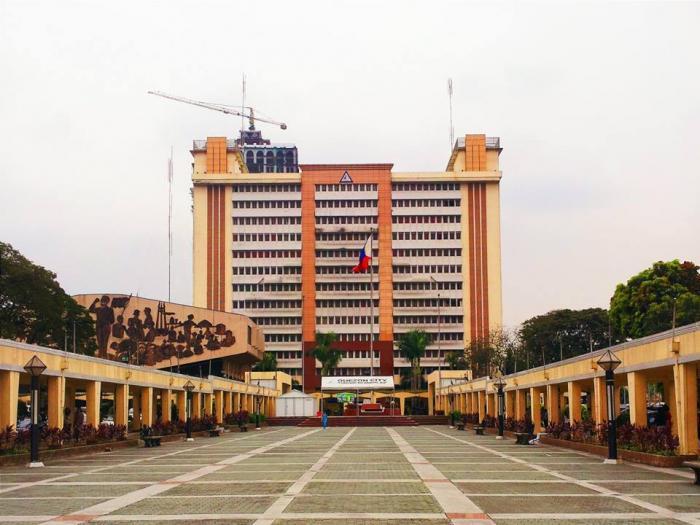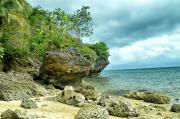
Quezon City is the most populous city in the Philippines and the largest city by area in Metro Manila. The city was founded by Manuel L. Quezon, former President of the Philippines, and it replaced Manila as the country’s capital for 28 years from 1948 to 1976. Quezon City also has numerous tourist attractions and some of them are historically significant. Here are the eight (8) historical tourist attractions located within the city:
1. Quezon Memorial Circle Shrine

Situated in Elliptical Road, it is the tallest structure in the city. The shrine is about 66 meter high and is a tribute to the founder of Quezon City - President Manuel Luis Quezon. The monument stands in the center of a 27 hectare rotunda park that also boasts a museum which houses precious Quezonian items. The shrine contains the remains of Pres. Quezon.
How to get there: From Mabini Street of Taft Avenue, take a PUJ bound for "Fairview". Get off right at the side of the Quezon Memorial Circle. The travel time is around 45 minutes.
2. Barrio Pugad Lawin (Balintawak)
Just across the cloverleaf Market, it is a special Philippine historic site where the Great Plebianand founder of KKK Andres Bonifacio started the Philippine Revolution against Spanish oppression in 1896. The uprising became famous as the “Cry of Balintawak.”
How to get there: From Taft Avenue, take a PUJ bound for "Blumentritt/Dimasalang" and get off at Blumentritt market and hail another PUJ bound for "Novaliches". Get off at Cloverleaf market. The travel time is approximately 1 hour.
3. Barrio La Loma
Located in La Loma, Blumentritt, it is one of the places in Manila where Filipinos and Spaniards fought. It is said that the place where the Filipinos first fought the Americans during the Philippine-American War. Presently, La Loma is famous for its open-air lechon (roast pig).
How to get there: From Taft Avenue, take a PUJ bound for "La Loma". The travel time is around 30 minutes.
4. Quezon City Hall Situated in East Avenue, Quezon City. This was the place where the new “Philippine Constitution” was signed in 1971 and it is one of the tallest city halls in the country. The building is not only the center of the city government activities but it also houses other national government agencies like TESDA.
Situated in East Avenue, Quezon City. This was the place where the new “Philippine Constitution” was signed in 1971 and it is one of the tallest city halls in the country. The building is not only the center of the city government activities but it also houses other national government agencies like TESDA.
How to get there: From Taft Avenue or T.M. Kalaw Street, take a PUJ bound for "Fairview". Drop off at the side of the Quezon Memorial Circle and have a 5-minute walk going to Quezon City Hall. The travel time is approximately 45 minutes.
5. University of the Philippines-Diliman

This state-owned university was established in June 1908 and is the country’s premiere institute of higher learning and considered the finest in Southeast Asia. During 1970s from 1980s, the campus was the site of much student activism. It was one of the reasons to Marcos’ declaration of martial law in 1972.
How to get there: From Taft Avenue or T.M. Kalaw St., take a PUJ bound for "Fairview". Get off right at the UP campus. The travel time is around 45 minutes.
6. Araneta Coliseum Known as “The Big Dome” it is an indoor multi-purpose sports arena located in the Cubao area of Quezon City. The coliseum opened on March 16, 1960, with Gabriel "Flash" Elorde winning the World Junior Lightweight champion from American boxer Harold Gomes. It is also the place where the classic “Fight of a Lifetime” between Mohammed Ali and Joe Frazier took place in 1976.
Known as “The Big Dome” it is an indoor multi-purpose sports arena located in the Cubao area of Quezon City. The coliseum opened on March 16, 1960, with Gabriel "Flash" Elorde winning the World Junior Lightweight champion from American boxer Harold Gomes. It is also the place where the classic “Fight of a Lifetime” between Mohammed Ali and Joe Frazier took place in 1976.
How to get there: From Taft Avenue or T.M. Kalaw St., take a PUJ bound for "Cubao" and drop off at Cubao then have a 10-minute walk going to Araneta Coliseum.










